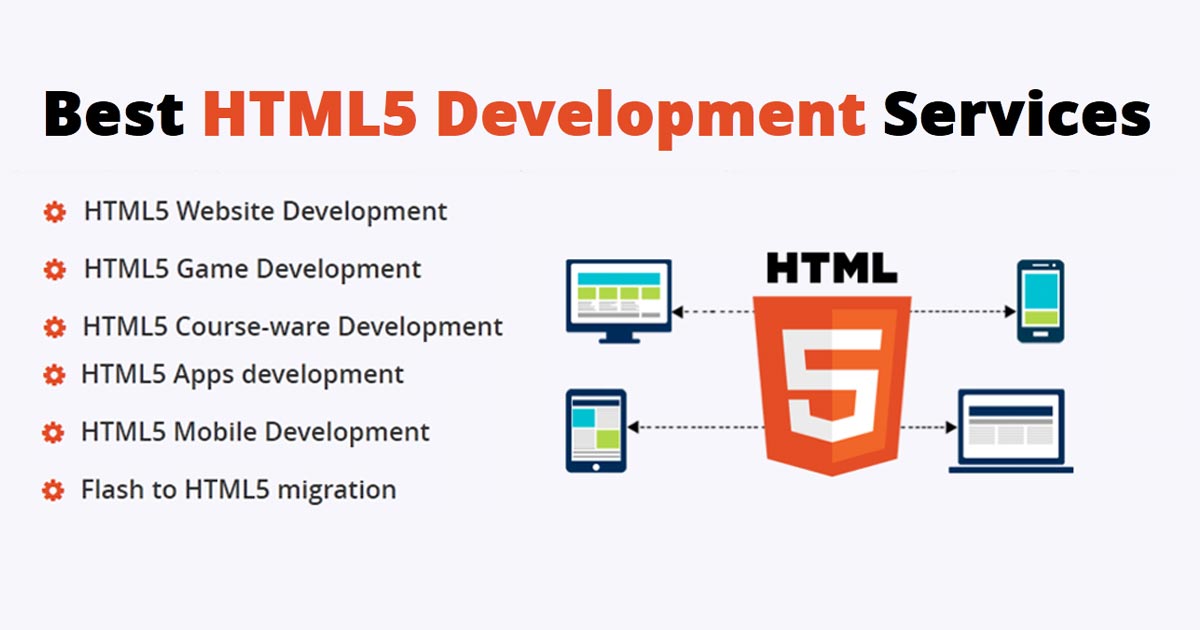Tube Rank: Your Guide to Video Success
Discover tips and insights for optimizing your video presence.
HTML5: A Playground for Modern Web Wizards
Unlock the magic of HTML5! Discover tips, tricks, and tools to elevate your web development skills and enchant your projects.
Unlocking the Power of HTML5: Essential Features You Need to Know
HTML5 is a powerful web technology that brings a plethora of features designed to enhance user experience and streamline web development. One of the standout capabilities of HTML5 is its improved support for multimedia, allowing developers to integrate audio and video content without relying on third-party plugins. The native audio and video tags (<audio> and <video>) enable seamless playback across devices, making it easier for content creators to deliver high-quality media experiences. Furthermore, HTML5 introduces the canvas element, providing a dynamic space for rendering graphics on the fly, which is perfect for interactive games, data visualizations, and captivating animations.
In addition to multimedia enhancements, HTML5 emphasizes better interactivity and connectivity through features like local storage and WebSockets. Local storage allows web applications to store data locally within the user's browser, enabling faster access to information and a richer offline experience. On the other hand, WebSockets facilitate real-time communication between the client and server, crucial for applications like chat services and collaborative tools. As developers continue to adopt HTML5, understanding these essential features will empower them to create more engaging, responsive, and user-friendly websites that cater to the demands of modern internet users.

HTML5 vs. Previous Versions: What Makes It a Game Changer?
HTML5 represents a significant leap forward from its predecessors, introducing a myriad of features that enhance web development and user experience. One of the most notable advancements is semantic markup, which allows developers to create more meaningful and accessible content. Unlike earlier versions, HTML5 includes new elements such as <header>, <footer>, <article>, and <section>, which not only improve the structure of a webpage but also aid search engines in indexing content effectively. This semantic approach not only boosts SEO performance but also enhances compatibility with a wide range of devices, from desktops to mobile phones.
Another game-changing feature introduced with HTML5 is the support for rich media elements, such as <audio> and <video>. These tags eliminate the need for third-party plugins, streamlining the process of embedding multimedia content directly into web pages. Moreover, HTML5 supports canvas for rendering graphics and animations on-the-fly, allowing for more interactive and engaging web applications. Together, these advancements not only simplify the coding process but also create a more dynamic and immersive experience for users, significantly setting HTML5 apart from previous versions.
How to Create Interactive Web Experiences with HTML5
Creating interactive web experiences with HTML5 begins with understanding its powerful features that enhance user engagement. One of the key elements you can utilize is the Canvas API, which allows for dynamic, scriptable rendering of 2D shapes and bitmap images. By incorporating the Canvas element in your HTML, you can draw graphics on the fly, enabling activities such as animation, game development, and data visualization. For example, you can create a simple drawing application where users can interact by clicking and dragging their mouse to draw shapes.
Another essential aspect of HTML5 is the Video and Audio elements, which allow you to embed rich media seamlessly. With built-in controls and support for various formats, integrating media can significantly enhance the interactive experience on your site. To get started, you can use the following simple code snippet to include a video:
<video width="320" height="240" controls>
<source src="movie.mp4" type="video/mp4">
<source src="movie.ogg" type="video/ogg">
Your browser does not support the video tag.
</video>This flexibility encourages visitors to engage with your content, thus fostering a more immersive browsing experience.